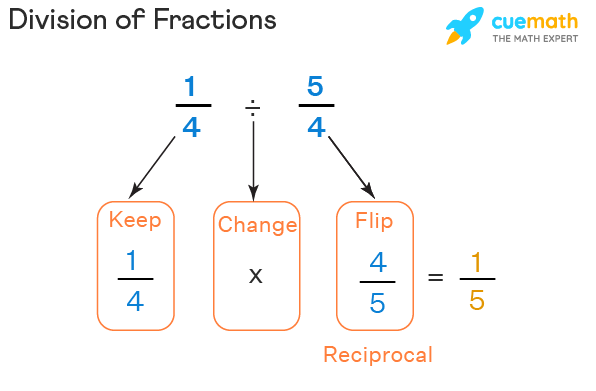Have you ever encountered a number like 0.33333… and wondered how to express it as a fraction? It’s a common question that pops up in math classes and real-world situations. This seemingly endless string of threes, known as a repeating decimal, can be transformed into a simple fraction with a little bit of mathematical magic.

Image: www.youtube.com
In this article, we’ll delve into the ins and outs of converting repeating decimals to fractions, unraveling the mystery behind the seemingly infinite decimal expansion. We’ll explore the steps involved in this conversion process, and provide you with the tools to confidently tackle any repeating decimal you encounter.
The Mystery of Repeating Decimals
Repeating decimals, also known as recurring decimals, are numbers that have a specific digit or sequence of digits that repeat indefinitely after the decimal point. They can be quite perplexing, especially when trying to visualize their exact value. The number 0.33333… is a simple example, but more complex patterns like 1.234234234… also fall into this category.
Understanding how to convert these seemingly unending decimals into fractions is crucial in various mathematical applications, from solving equations to interpreting measurements. The ability to express a repeating decimal as a fraction allows us to work with it more efficiently and precisely.
Decoding Repeating Decimals: A Step-by-Step Guide
Step 1: Define the Decimal and Its Repeating Block
Start by identifying the decimal you want to convert and the repeating block. In our example, the decimal is 0.33333…, and the repeating block is simply “3”.

Image: www.cuemath.com
Step 2: Set Up an Equation
Let ‘x’ represent the decimal. So, in our case, we have:
x = 0.33333…
Step 3: Multiply to Shift the Decimal
Multiply both sides of the equation by 10 raised to the power of the number of digits in the repeating block. Since we have one digit in our repeating block (“3”), we’ll multiply by 10:
10x = 3.33333…
Step 4: Subtract the Original Equation
Subtract the original equation (x = 0.33333…) from the equation we got in Step 3 (10x = 3.33333…):
10x – x = 3.33333… – 0.33333…
9x = 3
Step 5: Solve for x
Divide both sides by 9 to isolate x:
x = 3/9
Step 6: Simplify the Fraction
Simplify the fraction by dividing both numerator and denominator by their common factor, which is 3:
x = 1/3
Beyond 0.3 Repeating: Mastering Different Repeating Decimals
The process we’ve outlined applies to all repeating decimals, regardless of the length of the repeating block or its location in the decimal. Let’s explore a few more examples:
Example 1: 0.66666…
1. x = 0.66666…
2. 10x = 6.66666…
3. 10x – x = 6.66666… – 0.66666…
4. 9x = 6
5. x = 6/9
6. x = 2/3
Example 2: 0.142857142857…
1. x = 0.142857142857…
2. 1000000x = 142857.142857…
3. 1000000x – x = 142857.142857… – 0.142857…
4. 999999x = 142857
5. x = 142857/999999
6. x = 1/7 (Simplified after identifying the common factor)
Tips and Expert Advice for Converting Repeating Decimals:
Here are a few useful tips to make the conversion process smoother and more efficient:
- Identify the Repeating Block: Clearly identify the digits that repeat before starting the conversion process.
- Choose the Right Multiplier: Select the appropriate power of 10 for multiplying the equation based on the number of digits in the repeating block.
- Simplify When Possible: Always simplify the resulting fraction to its simplest form.
Remember, converting repeating decimals requires a little attention to detail and a good understanding of algebraic manipulation. Practice makes perfect, so don’t hesitate to try out different examples to solidify your understanding.
FAQs about Converting Repeating Decimals to Fractions:
Q: Can all repeating decimals be converted to fractions?
A: Yes, every repeating decimal can be converted to a fraction. This is because repeating decimals represent rational numbers, meaning they can be expressed as a ratio of two integers.
Q: What if the repeating block starts after some non-repeating digits?
A: If the repeating block starts after some non-repeating digits, follow a similar process, but adjust the equation accordingly. For example, convert 0.23333… as follows:
1. x = 0.2333…
2. 10x = 2.3333…
3. 100x = 23.3333…
4. 100x – 10x = 23.3333… – 2.3333…
5. 90x = 21
6. x = 21/90
7. x = 7/30 (Simplified)
Q: Can all decimal numbers be converted to fractions?
A: No, only rational numbers can be converted to fractions. Irrational numbers, like pi (π) or the square root of 2, cannot be represented as a precise ratio of two integers, so they cannot be expressed as fractions.
03 Repeating As A Fraction
Conclusion: Embracing the Power of Fractions
Repeating decimals may seem complicated at first, but with a little practice and understanding, converting them to fractions becomes a straightforward process. This skill is valuable in various mathematical contexts, enabling you to work with decimals more efficiently and accurately.
Are you interested in exploring further examples of converting repeating decimals? Let us know in the comments below! We’re always happy to delve deeper into the world of math and help you gain a clearer understanding of these fascinating numbers.





